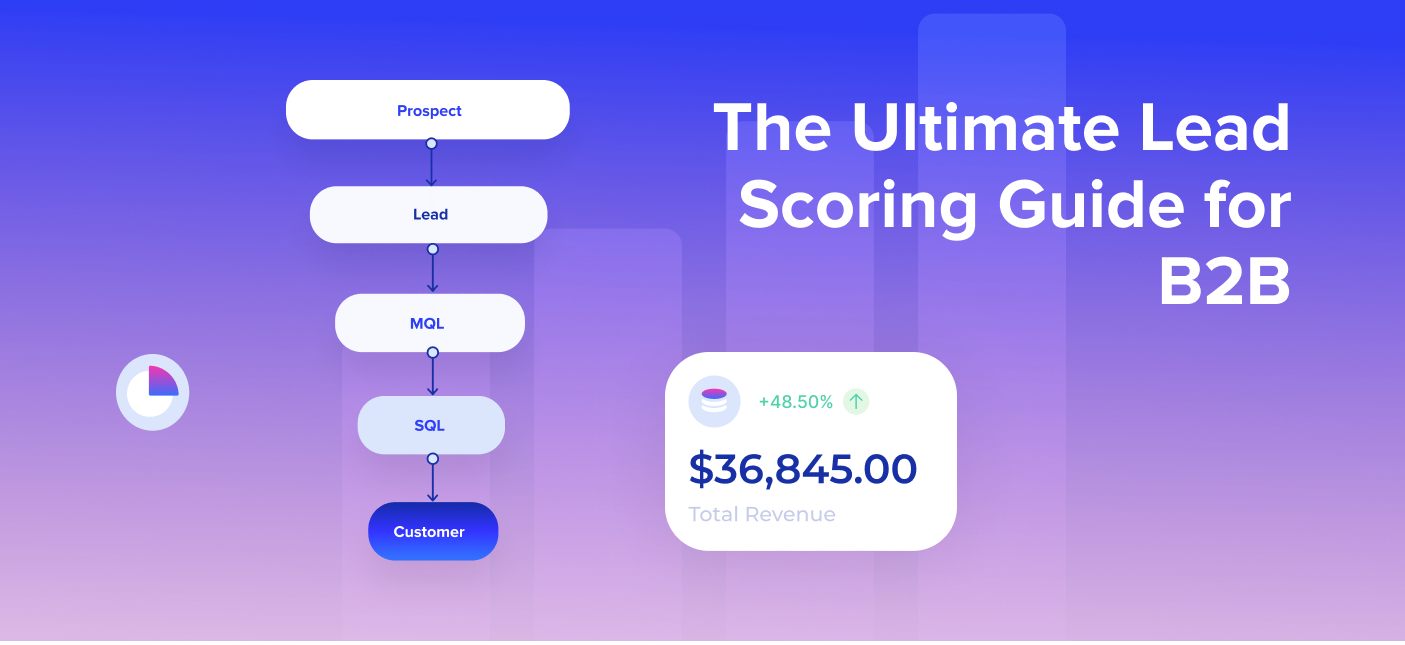Lead scoring can determine someone’s level of interest in your business, driving relevant and sharper engagement. To know which leads are valuable, you need a system that will differentiate flukes from opportunities.
By assigning a lead score to each prospect, you’ll see right through your customer like you’re a prophet.
Because what do prophets do best? They predict the future.
And lead scoring can help you do precisely that – predict your customers’ behaviour, so you can run them through the sales funnel more quickly and efficiently.
Whether you are getting started or are a seasoned lead scorer, let’s show you some ways to streamline your abilities and simplify your lead scoring process.
Table of Contents
What is lead scoring?
Lead scoring is a method for ranking leads, and its goal is to define your prospective customers’ place in the B2B digital marketing funnel.
As the name suggests, the goal of lead scoring is to score leads based on different criteria. You achieve that by assigning values or points for each lead you generate.
Then, you use the gathered information to optimize your marketing and sales efforts, generate higher-quality leads and, ultimately, turn more opportunities into paying customers.

Let’s illustrate how the lead scoring system works.
Not all prospects have the same purchasing intent when going through your website. Some are perhaps first-time visitors who are familiarizing themselves with your products/services; some are there by accident, while others might be in the process of finalizing their purchasing decision (e.g. deciding whether to buy from you or your competitor).
The goal of your marketing and sales efforts is to run prospects and leads through the sales funnel as quickly and efficiently as possible to increase conversions and, consequently, your ROI. However, you can’t use the same approach for newbies and individuals who are sales-ready.
And that’s where lead scoring jumps in.
If you don’t assign a value to each type of lead, you won’t know how to differentiate them. And you won’t know how to adjust your marketing and sales to each lead.
By assigning these values, you will get a clearer picture of which leads have the best chance of converting.
You can use numeric values or simple terms like “hot,” “cold,’’ or ‘’warm,’’ but let’s save this for later.
We promise that it will make more sense as we dive deeper into this topic.
Let’s introduce some clarifiers to ensure that we get our point across. The obvious first step is to examine how lead scoring works.
How lead scoring works
Most lead scoring systems work by assigning specific values to each customers’ activity as they go through different sales funnel stages. Of course, each of those actions scores a different number of points. When your lead gathers a desirable point total, they are considered to be a ‘’hot lead’’ or a ‘’hot prospect.’’
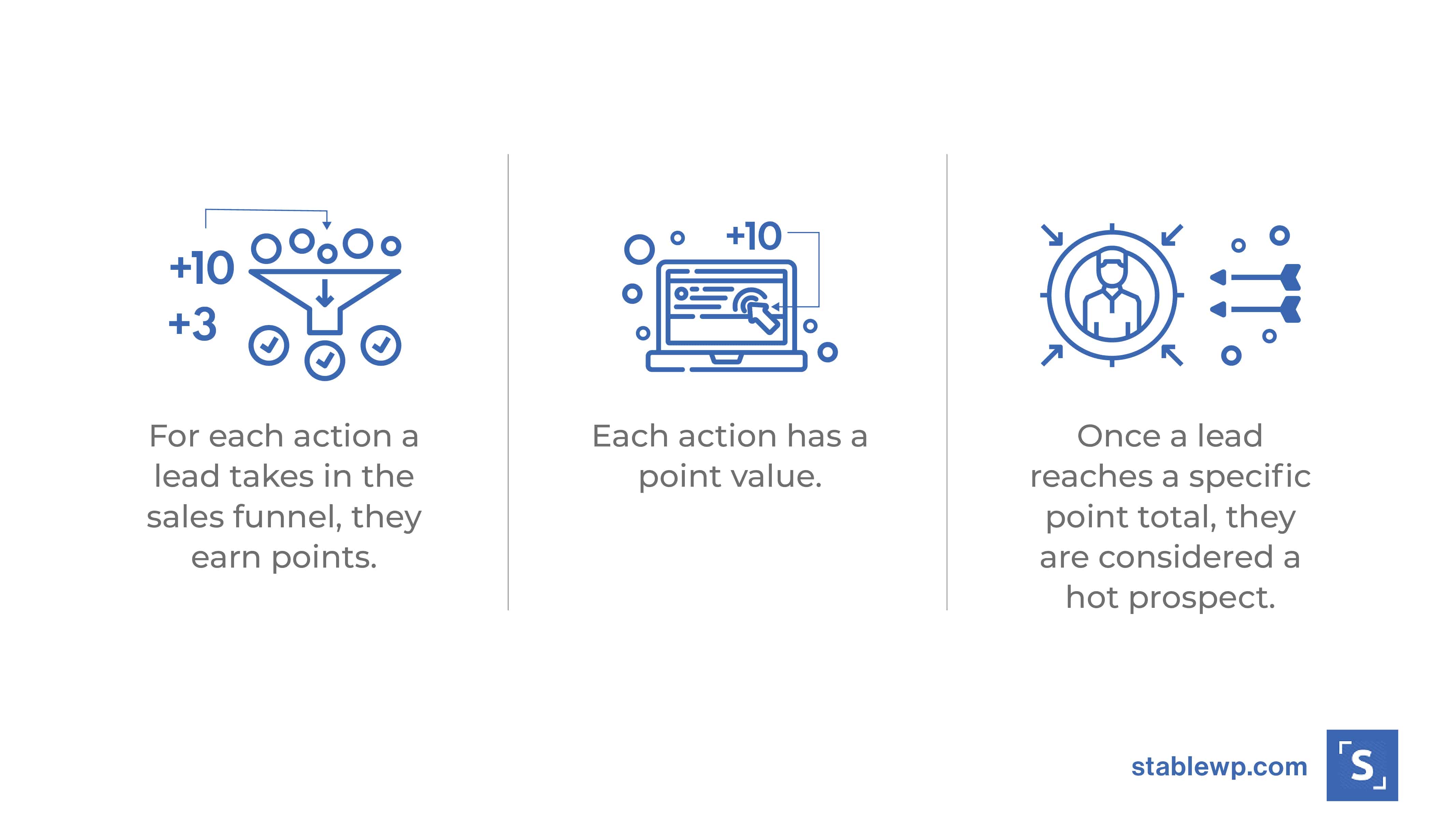
The point of lead scoring is to learn how to approach your customers and run them through the sales funnel. As we have mentioned before, you can’t use the same approach for everyone, especially if they’re in different stages of the buying journey.
For example, individuals who are new to your website might be scared off if you use aggressive tactics to convince them to purchase your deal.
If you were new to a website, and all of a sudden you see a CTA (call-to-action) with buying incentives jumping out left and right, you’d be like ‘’I entered the website only a minute ago, and I am already prompted to buy a product that I haven’t even had the chance to familiarize with in the first place.’’
However, if you’ve been lurking around a website for a while debating whether to make your purchase, and you see a handy CTA that offers a discount or a freebie, you’ll likely end up buying the product thanks to additional incentives.
So, if you score your leads properly, you’ll know when and where to introduce soft-sells and when’s the perfect time for harder and more aggressive sales tactics.
Not all companies use the same lead scoring methods. These depend on your company size, personal preferences, ease of use, and many other factors, which we’ll explore in the section below.
Get an unfair advantage with our powerful 3-step funnel strategy and learn how to increase leads and sales by 300% fast.3X Your Business in 90 Days
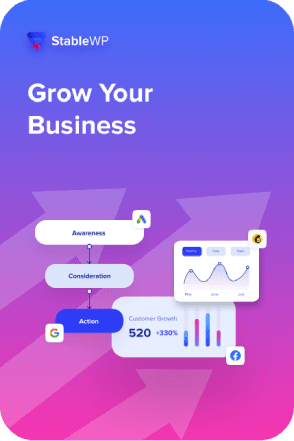
Different types of lead scoring models
A lead scoring model helps you boost your conversion rates, differentiate leads, and decide whether a particular lead is worth your time or not. An effective lead scoring model allows you to score leads according to specific attributes, which include:
a) Demographics
Using demographic information as an attribute to score leads can see how they fit in with your desired target audience. You can collect this information through your landing page or by going through your website’s analytics.
This ensures that you don’t waste any additional time on individuals who don’t fall into your target audience, consequently reaching your ideal customers more easily.
You can also use negative scores to illustrate which prospects have little to no value.
For example, if you only want to sell to a particular geographic location, you would give negative points to a lead that falls outside of the desired location. Or, if only sell to a specific age group, you can assign negative points to anyone who falls outside of that category.
b) Online behaviour
When a lead interacts with your website in a certain way, it gives you insight into how interested they are in your product or service.
Customers’ behaviour can be broken down into two areas: the number of people who engage with your website and the type of pages and forms they engage with. You then assign higher scores to leads that visit high-value pages (e.g., visiting the pricing page, clicking on CTAs, etc.).

Or you may want to diversify it by volume and give higher scores to those that have interacted with a specific webpage more than once.
Another important thing to analyze and the score is the change in lead behaviour. For example, if someone stopped engaging with your website after a certain period, you would detract points from their lead score.
c) Company information
If you are a B2B organization, you may be interested in selling products or services to specific companies or industries or who specialize in a particular type of product.
You can gain more insights by creating B2B landing page forms and attribute points to leads who fit into your desired target audience criteria.
d) Engagement on social media
If a lead engages with your brand on specific social networks, it gives you an idea of where you can nurture these leads. You can look at how many times they’ve shared a post and how active they are on specific social networks. You can award points accordingly.
And you can use the said social media network to nurture these leads.
e) Email engagement
If a lead has opted to receive emails, you can gauge their interest through open and click-through rates. By gaining insight into these areas, you can focus on the leads that seem more engaged.

You can attribute a higher lead score to those who interact with high-value emails—for example, demonstrations or webinar offers, instead of regular newsletters.
f) Spam detection
If you’re going through your form responses and notice any spammy activity or weird information from a particular customer, you can assign lower scores to them.
Phishing attempts are on the rise and individuals who send these spammy responses never really intended to interact with your website in any other way than trying to scam you or infect your website with malware.
How lead scoring fits into the sales funnel
Lead scoring is essential for an effective sales funnel. It helps organize leads into those who need further nurturing from the marketing team and those ready for the sales department. With lead scoring, you can customize your content and messaging as well as marketing and sales approach to suit leads at every stage of the buyer’s journey.
The sales funnel shows the journey your customers go through during the sales process. It describes the whole customer journey, starting from the awareness stage, and ending with a profitable long-term relationship.
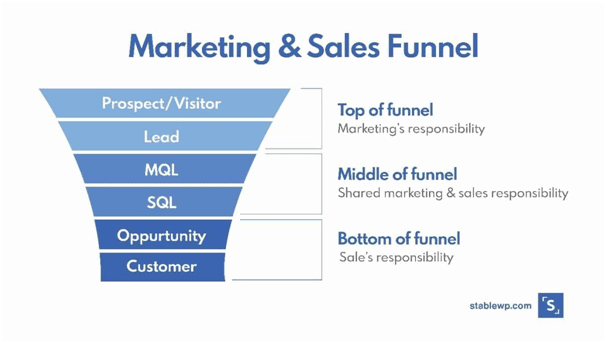
We can also differentiate the customer support funnel from the marketing and sales funnel. The support funnel comprises of the following stages:
- 1. Onboarding: their first interaction and experience with the product
- 2. Post-sales support: where the support team provides resources to the customer
- 3. Retention: proactively educating customers on best practices or providing support around product updates and new releases
- 4. Loyalty & advocacy: connecting satisfied return customers so they can share best practices, tips or support each other, providing social proof that your product works and that it’s worth the purchase. To inspire continuous loyalty from your customers, a good idea might be to offer a referral or affiliate program.
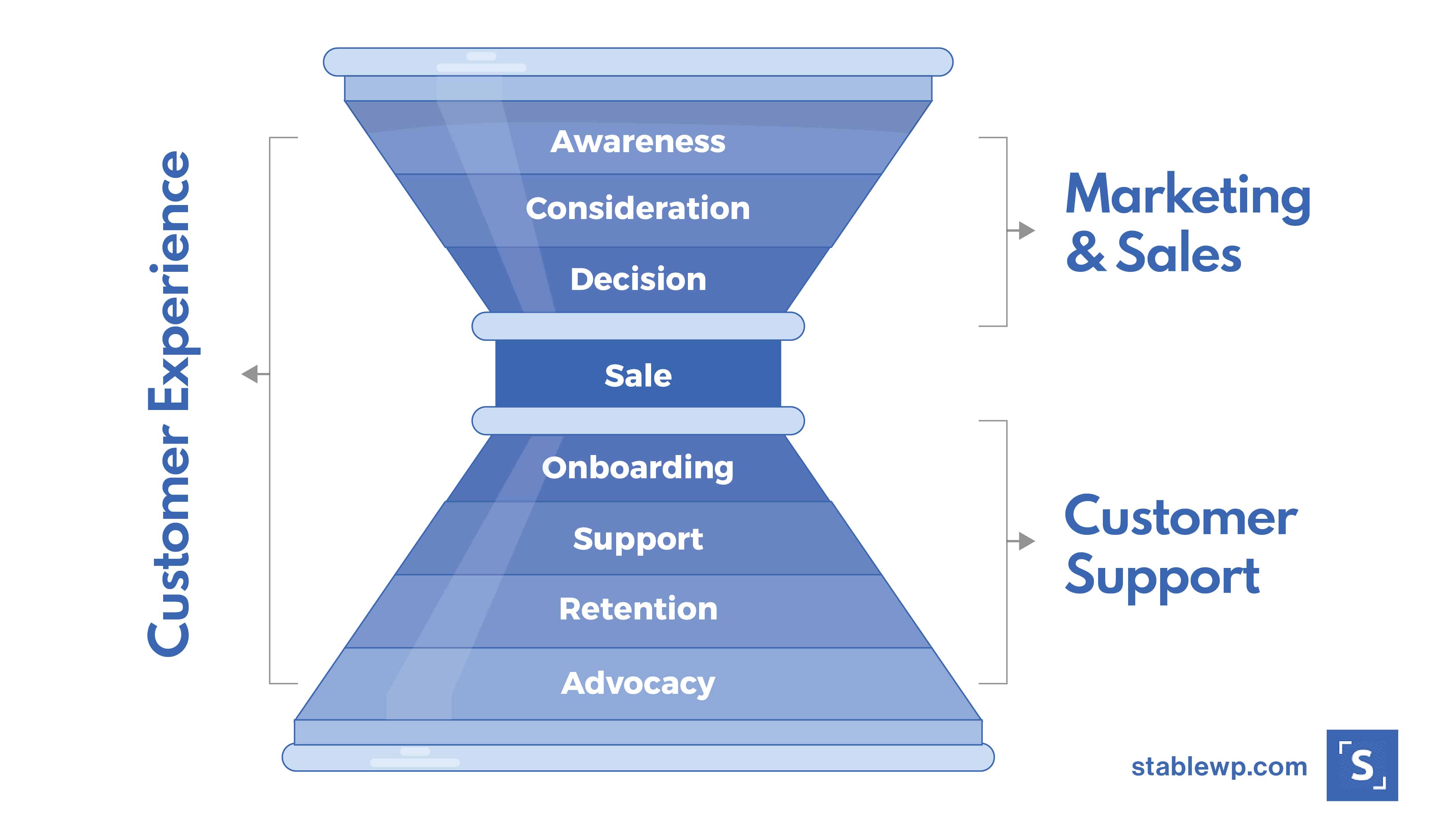
The customer support funnel describes your customers’ journey post-sale, while the sales funnel describes their pre-sale activities.
Lead scoring is effective in both categories, pre and post-sale stages of the customer journey.
In the pre-sale category, lead scoring helps you prioritize leads who are more likely to convert.
In the post-sale funnel, lead scoring helps with determining how to keep your customer and inspire them to promote your product through word-of-mouth.
However, we won’t be able to diversify leads effectively without breaking them down into further segments, such as:
a) Marketing qualified leads (MQL)
Commonly abbreviated to MQL, marketing qualified leads are customers who have indicated an interest in what your brand can offer based on marketing.
They usually either engage with a brand voluntarily, such as filling out a web form, adding items to a shopping cart, or making frequent visits to your website.
They are usually in the consideration stage of the sales funnel. This is the perfect moment to have your marketing team send some materials, so the customers would familiarize themselves with your product and how it can help solve their problem.
b) Sales qualified leads (SQL)
An SQL is a customer who specifically fits your criteria and is deemed ready for the sales team to close a sale. This means that they’ve reached the decision/action stage and are ready to make a purchasing decision.
The goal of every marketing and lead generation strategy is to have your customers become SQLs, then convert as many of them as possible into opportunities and paying customers.
c) Opportunities
The term ‘’opportunities’’ describes any activity that has the potential to generate revenue from a customer. The ultimate goal is to have your leads convert into actual opportunities to increase conversion rates.
And scoring leads will help you determine which MQLs and SQLs are ready to jump the gun and purchase your product or service.
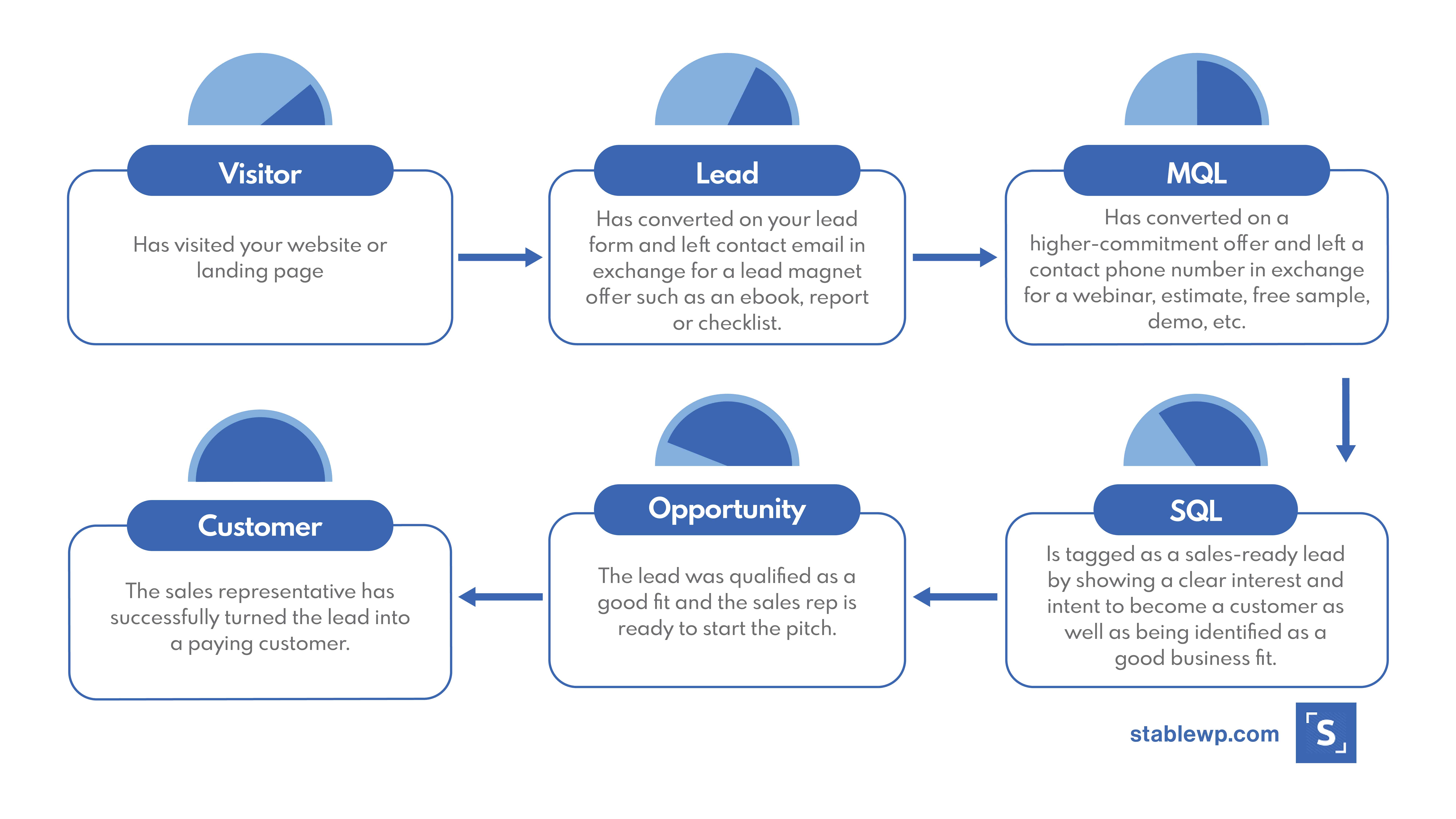
Using lead scoring in this context can provide you with an almost infinite array of segmentation options, hence increasing your reach and giving you more options to convert window shoppers into paying customers.
Lead scoring can increase your sales efficiency and market your product more effectively, which improves collaboration between sales and marketing departments, finally resulting in increased revenue.
However, that’s just one benefit in the sea of others.
Benefits of lead scoring
If you’ve dabbled in any type of marketing – be it on social media or even traditional media, there’s one common threat – analyzing data. And lead scoring is exactly that – a way to analyze current leads to learn where they’re at in the sales funnel and discover the best way to incentivize them to convert into paying customers.
If you don’t use lead scoring, you might assess your customers incorrectly and lose them.
For example, if you bombard first-time visitors with offers, discounts, freebies, and a thousand other things, they’ll get scared away.
Just think of those aggressive store presenters that shove products in your face. Nine times out of ten, the prospective customer doesn’t end up buying the product because they feel pressured and overwhelmed, which takes us to our first benefit of lead scoring – improving conversions.
Lead scoring improves lead to opportunity conversion rates
Generating quality leads is difficult on its own, and it takes your customer acquisition costs to the next level. However, if you don’t convert these leads into opportunities, you’re basically wasting your marketing budget.
Lead scoring and lead segmentation are great ways to learn which leads have the biggest chance of converting into paying customers. Then, you use this knowledge to offer suitable incentives to run your customers through the sales funnel quicker.
For example, if you’re looking to engage first-time visitors, you can write how-to blog posts or offer free e-books in return for emails. Then, you can use email lists to increasing revenue by sending appealing offers, discounts, or coupons.
Or you might want to inspire satisfied customers into purchasing more of your products? In that case, send surveys and offer loyalty, affiliate and referral programs.
Without lead scoring, you wouldn’t be able to differentiate various types of leads, and consequently, you wouldn’t be able to know how to approach each of these categories in the most effective way that will result in conversions.
Lead scoring improves the close rate
This point goes hand-in-hand with the previous one. And guess what? Science supports the claim that lead scoring improves your close rate.
The close rate represents the number of leads you were able to convert into paying customers.
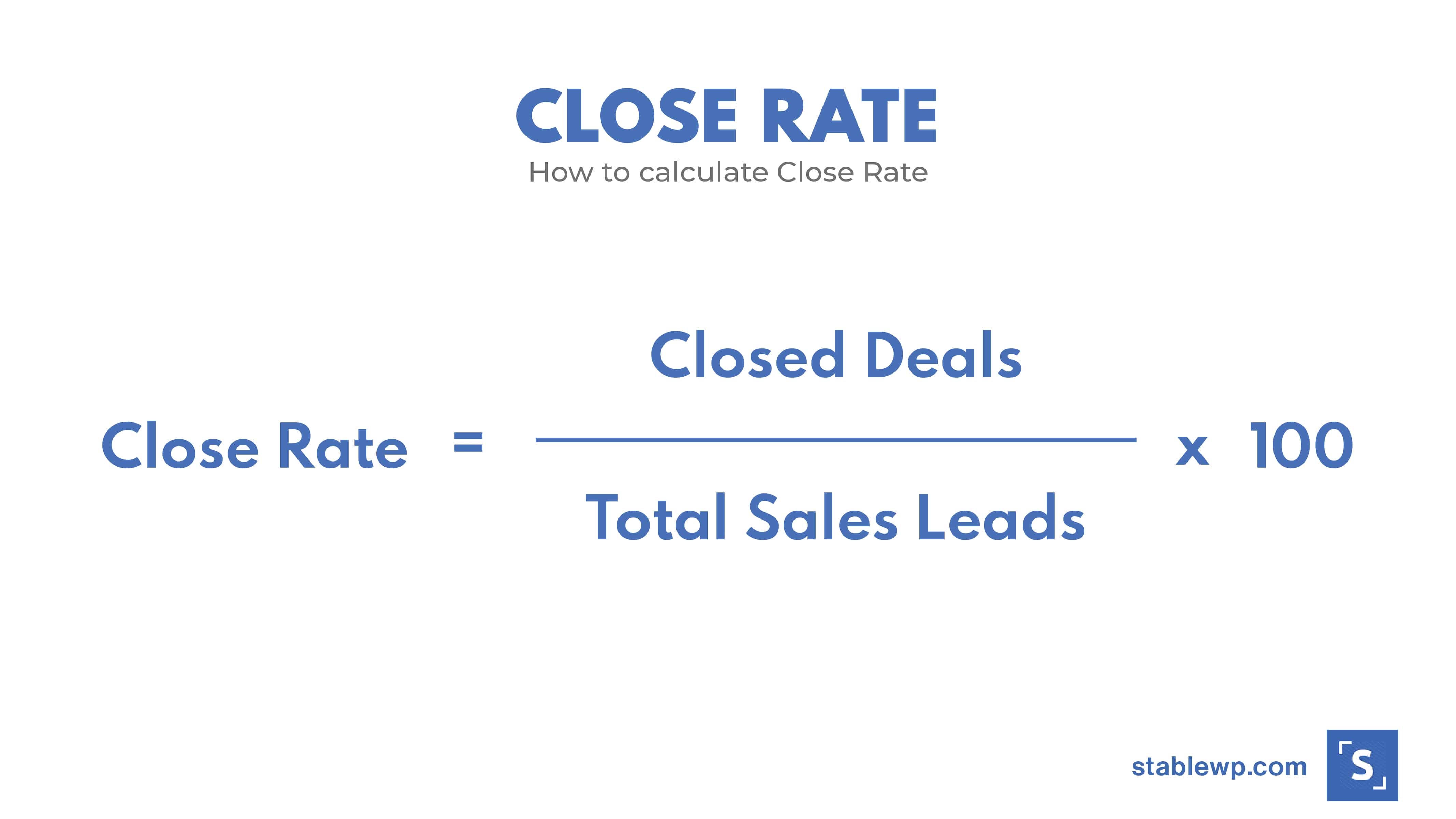
Eloqua has performed a study where they analyzed ten B2B companies that use lead scoring systems. The results have shown that lead scoring has improved their close rate by 30%, revenue by 18%, and revenue-per-deal by 17%.
Lead scoring shortens the sales cycle and maximizes sales efficiency
Wouldn’t it be great if the sales funnel was shorter and if it took less time to convert leads into customers? It would be awesome.
Guess what? Lead scoring helps do exactly that.
Since we use lead scoring to define the position of any customer within the sales funnel, you can customize your approach to fit their shopping needs and wants. That means that if you hit their sweet spot early on, they will zoom through the sales cycle much faster.
Lead scoring helps maximize sales efficiency because it eliminates the need for guessing and waiting around. That means that you will convert more leads more efficiently and consequently minimize your customer acquisition costs.
Scoring leads helps with more predictable forecasting
Lead scoring also helps you make easier predictions. Since this is an ongoing process that requires a lot of data collection and analysis, eventually, you’ll have more than enough material that you can use to predict your customers’ behaviour and allocate sales and marketing resources to the right efforts.
Being proactive with your marketing strategy is another great way to increase your ROI and lower customer acquisition costs. If you know how your customer is going to behave, you’ll know exactly which incentives to use at any given moment.
After analyzing enough data, you’ll be able to spot patterns and purchasing habits across different user types, which you can use to predict your future customers’ behaviour as well.
Lead scoring helps enable measurable ROI on lead generation
Being able to measure your ROI on lead generation will show you exactly how valuable your marketing efforts are. If you know how much you’re spending and how much it’s paying off, you’ll be able to allocate your resources more effectively.
Not only does it help you determine key objectives and goals, but it also lets you know which tactics are not worth your time and effort.
And that’s not all…
Lead scoring also helps you reach a lead generation ROI that’s 77% higher compared to marketers who don’t use lead scoring at all.
How to get started with lead scoring
In this section, we’ll explore different steps you need to perform to get started with lead scoring. It is imperative that you start your lead scoring efforts properly from the get-go; otherwise, you’re risking wasting a lot of time and resources in vain.
Devising a quality lead scoring strategy is the trickiest part because it requires a lot of thought and data.
We don’t mean to scare you off, though. Even though metrics look very daunting and complex, in reality, they’re not really that difficult, and lead scoring metrics are no exception.
Before making any calculations or optimizations, the obvious first step is to create a model which you’ll follow. Here’s how to do that.
Step 1: Create a lead scoring model
When creating a lead scoring model, you need to be very precise and include all relevant factors. Your lead scoring model will become the backbone of your lead generation strategy, so take your time to make it as thorough as possible.
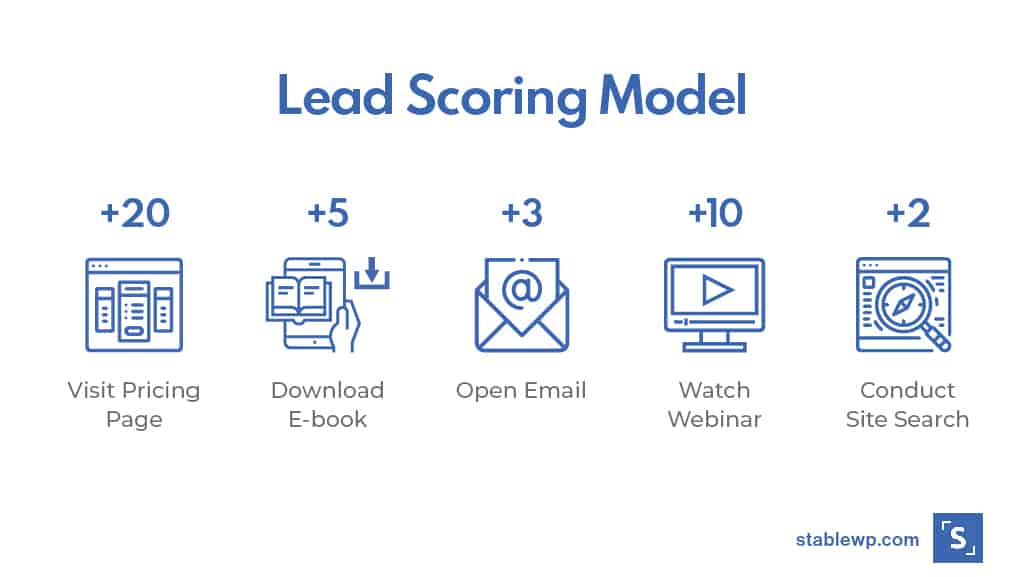
To make the lead scoring process easier and more efficient, we recommend diving it into four main categories:
1. Define your buyer persona
The single most important thing for effective lead scoring is knowing your customer. If you know who buys from you, you’ll know how and where to target and attract your audience. You define their persona by dividing them into groups based on similar identifies and preferences.
For example, if you’re selling eyewear, you can divide your audience into the following categories and sub-categories:
Ones who buy prescription glasses:
- Kids
- Adults
- Teens
- Elderly
Ones who buy sunglasses:
- Sports sunglasses
- Fashion sunglasses
You can also divide them by age, geo-location, and other suitable parameters. This step will help with defining the effectiveness and conversion potential of each interest group.
2. Analyze their online behaviour
Online behaviour describes how your leads engage with your product, service, or marketing channels. This step clearly shows what influences their shopping decisions.
You can analyze their behaviour by observing which pages they’re visiting, which products they’re looking at, which ads they’re clicking on, their email open and click-through rates, etc.
This information shows exactly what they like and dislike, which helps you determine what brings in higher conversions.
3. Assign score attributes
The next step in your lead scoring model is to define how to prioritize attributes. This is necessary because it shows you exactly what to focus on.
Activities that bring in more conversions (e.g. looking at prices) should be scored higher compared to activities that are less likely to end up converting.
4. Assign values to each score
The final step of the lead scoring process is to assign a numerical value to each attribute.
Make sure to be precise because you’ll use these values for all future lead scoring efforts. We recommend using smaller ranges because it’s easy to get wrapped up in tons of numbers and lose sight of what’s actually important.
Our favourite is the good-old 1-5 scale because it’s very clear, concise, easy to use, and easy to analyze.
Step 2: Calculate lead scores
To calculate lead scores, you need to use the attributes chosen in the previous step as well as their assigned values and run them through a mathematical model that returns the exact scores for each lead in your sales pipeline.
The lead scoring calculation typically includes:
- 1. Establishing weights (1-100) to allocate to each attribute that qualifies a prospect. The total number should add up to 100 since the weights represent percentages that calibrate the lead scores.
- 2. Setting a maximum value for your score scale (i.e. 100)
- 3. Setting the total number of quality attributes
There are three main ways you can calculate a lead score:
a) Manual lead scoring
This method is by far the most complex and time-consuming because it consists of many different steps. Here’s how it works:
- 1. Calculate lead-to-customer conversion rate – To get this number, you should divide the number of newly acquired customers by the number of generated leads.
- 2. Select attributes for potential high-quality leads – Assign attributes that describe your former high-quality leads’ activities that led to conversions (e.g. people asking for free trials).
- 3. Calculate the end rate – score all actions taken by your leads. Then, use this number to figure out which actions lead to creating qualified leads.
- 4. Compare close rates and assign numerical values – lastly, find attributes that have individual close rates that are higher than your overall close rates. Then, select attributes that you think are important for conversions and assign a numerical value to them.
b) Logistic regression lead scoring
Logistic regression lead scoring is a complex mathematical method that includes using a formula based on probability of conversion based on previous actions and demographic information your leads take.
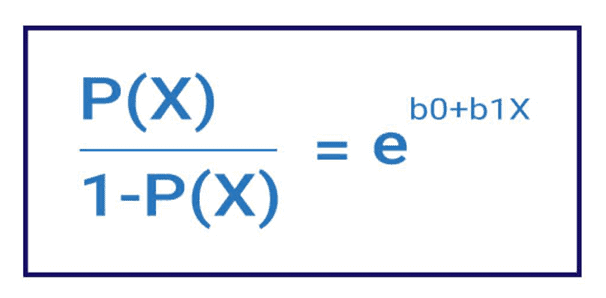
This method is much more precise because it utilizes data mining and data analysis techniques.
Essentially, you need to build an Excel or Google Sheets formula that calculates how likely is that your lead will convert into a paying customer.
If your team is blessed to have a data scientist, you can also use programming languages like Python and R to create a logistic regression model for lead scoring.
c) Predictive lead scoring
Predictive lead scoring uses machine-learning technology to sift through data and extract valuable leads. It aggregates user information and creates a formula that categorizes leads by importance and the likelihood of converting.
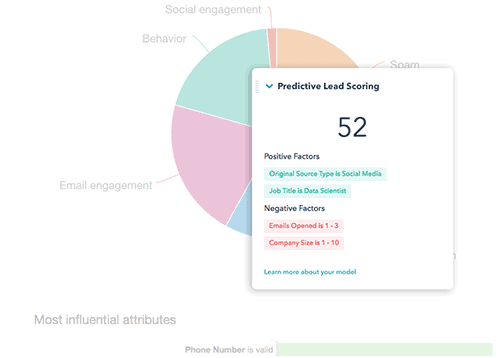
This method uses advanced software that automates most of the lead scoring work for you.
And the software improves itself by continuously analyzing previous campaigns and optimizing data accordingly.
Step 3: Segment leads based on their lead score
Segmenting leads based on their lead score helps you target specific audiences more efficiently. Use lead scores to categorize leads into meaningful segments to customize your marketing campaigns. This helps you target different types of leads with the right marketing campaigns or sales follow-ups.
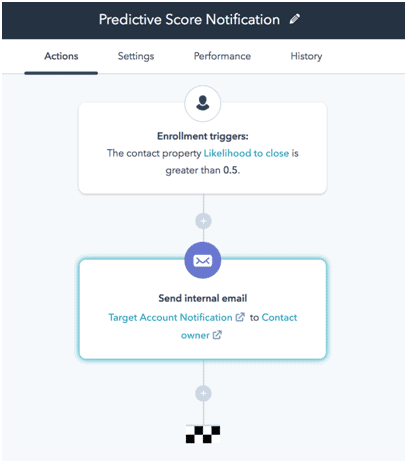
For example, you find a lead that has a decent lead score but is still not showing enough interest in your product. You can then engage in certain activities that will help them get to the end stage of the sales funnel, such as:
- 1. Offering personalized recommendations: if you notice that a lead with a high score can’t seem to proceed to checkout, offer them free shipping or an additional discount.
- 2. Optimizing the content and messaging for the right segment: this helps you discover if you are reaching the relevant audience. Segmenting leads by interests can achieve this goal because customers prefer seeing content that is relevant to their interests. Then, you can cater to each of their needs. For example, if a segment of your audience is interested in prescription glasses, write newsletters or blog posts on how to choose high-quality prescription glasses.
- 3. You can personalize engagement: For example, you can start nurturing leads using personalized emails or social media messaging to target their behaviour and needs. You can also use Google ads to scale revenue by showing different ad types to different lead segments. Matching the intent always helps with increasing conversions.
When you start to match the segments’ interests with the conversion rates, it puts you in an advantageous position. You are not selling products right away, but you’re building awareness and anticipation.
Step 4: Use tools for lead scoring automation
If you’re someone who’s not good with numbers or simply doesn’t have enough time to dedicate to lead scoring, then you should look into some software options that will automatize the whole process.
Luckily, such tools are abundant on the market, so let’s explore some main options:
- CRM – also known as Customer Relationship Management software, is a technology that companies use to manage customer interactions and discover potential customers. It stores and automates numerous processes to improve customer service and increase sales. There are many top-rated CRM software products out there, including Salesforce, HubSpot CRM, and Microsoft Dynamics 365.
- SMM – Social Media Marketing tools such as Sendible, NapoleonCat, and Sprout Social are a great way to collect and analyze customer data for lead scoring. They calculate and track important metrics such as likes, shares, comments, engagement, cost-per-click and performance, which you can include in your lead scoring attributes and calculations.
- Email Marketing Tools – Email marketing tools can provide invaluable insight into email campaigns. Tools like HubSpot and Salesforce Pardot are great options that will help you turn your email lists into money-making machines. You can also use these tools to aggregate valuable customer data, which you can integrate into your lead scoring calculations.
Metrics for lead scoring
Every business has different goals, and this means the approach to lead generation will differ for every company. Regardless, these are the most popular metrics that usually offer enough insight into your customers’ interests and their shopping habits:
- Video watch time: Sometimes referred to as audience retention, is the total amount of time spent watching a video on your platform.
- Click-through rate: This is the ratio of users that click on a link compared to the number of users who view a page or advertisement.
- Open rate: Relating to email marketing, this is the percentage rate at which emails are opened.
- Interactive actions: This refers to when a lead has interacted with your content in any way. This includes sharing, reposting, commenting, liking, etc.
- On-page analytics: One of the most critical metrics, commonly referred to as in-page analytics, is sometimes displayed as time-on-page or session duration. It is the average amount of time a user spends on a web page on your websites. This is a great indicator of how engaging your content is or how effective are your lead scoring efforts.
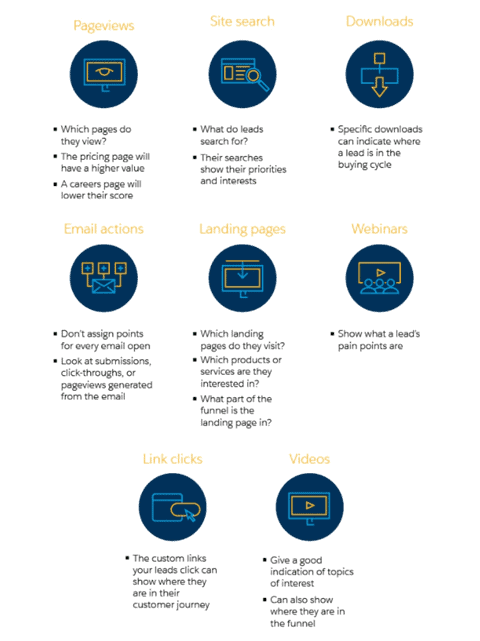
One of the best free tools you can use to analyze this data is Google Analytics. It gives you a wide variety of insights using some of the following key metrics:
- Source: where the website visitor came from – social media, an email link or a search engine
- Average time on page: This is the amount of time a visitor has spent on a single webpage. The longer someone is willing to spend on your page indicates how engaging your content is.
- Pageviews vs unique page views: A page view is the views of pages, and the unique page views highlight if the same user is going to one single page a handful of times per session
- Location: your customers’ geo-location.
- Exit rate: If there is a trend of visitors leaving on a certain webpage, you may be able to do something to entice the visitors into staying a bit longer on the page.
- Bounce rate: the rate of people viewing a single page without interacting any further and leaving the website. If your bounce rate is high, you might need to optimize your landing pages.
- Site speed: If a page doesn’t load quickly enough, it will likely cause a user to bounce and find a faster loading page. Most visitors abandon a mobile website that takes longer than 2 seconds to load. Site speed is of the utmost importance!
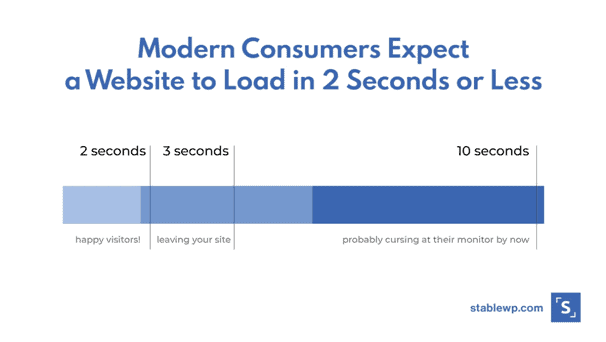
So, how do these lead scoring metrics help with increasing conversions? Let’s show you a scenario where a customer can navigate an effective sales funnel:
You run a social media ad that drives traffic to your landing page, and when the prospect arrives, you ask them to sign up for an email list that you use for generating leads.
Throughout the following weeks, you can slowly send out content in the form of blogs to educate your subscribers or inspire them to interact with your content further.
And at the end, you send a call to action along with a special offer (i.e. 10% discount), enticing them into finalizing the purchase.
These metrics are a critical lead scoring component. They show you exactly what works and what doesn’t, which leads you should focus more on, and which you should abandon.
Outbound and inbound leads: what’s the difference in lead scoring
Outbound and inbound leads are both crucial when it comes to lead scoring, but both yield different variables when it comes to the quality of results. Scoring leads when you target them, such as using paid search, gives you a far more personalized effect.
Before we get into the nitty and gritty, let’s first define the difference between inbound and outbound leads.
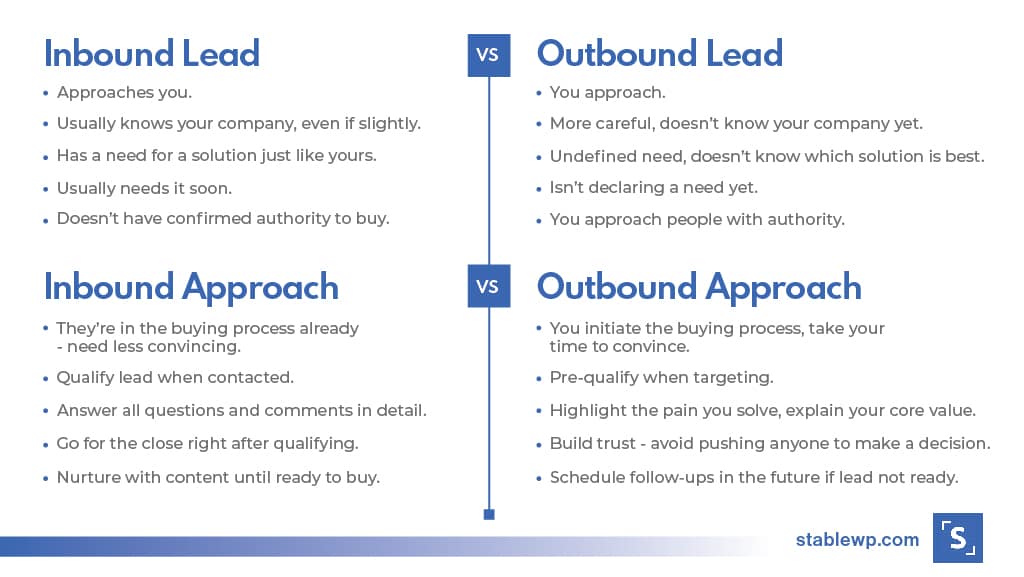
As you can see, inbound leads are more likely to convert quicker because they are usually followed by a sense of urgency. In that sense, they should score higher in your lead scoring model.
These leads often stem from organic search. And this refers to the search results that cannot be influenced through any paid advertising. An organic search may net you a good quality of results, but it can take a lot longer to get there. They already know what the problem is and what kind of solution they need. Now, the most important thing is to convince them to pick YOUR solution.
On the other hand, when you look at scoring leads via social media through paid search, you can target the demographics easier and incorporate two key approaches: psychographics and demographics.
Demographics focus on physical or external factors, like age, location, and gender. Psychographic information focuses on psychological aspects such as values, beliefs, and motivations.
Both organic search and paid search through inbound and outbound leads are useful, but the difference is straightforward finances. There are benefits of using demographics or outbound leads in comparison to inbound.
And, don’t only focus on one or the other. Make sure to follow up on both, because inbound leads can eventually convert if you give them enough attention and incentives.
Most effective lead generation channels
To generate successful leads, you have to utilize the right lead channels for your brand and demographics. Luckily, with so many options out there, you get an endless number of opportunities to promote your platform, attract customers, and increase conversions. Here are the six most important lead generation channels
- Email: Still one of the most effective ways of generating leads. From newsletters to eBooks, combined with automation tools and the ability to send personalized emails, you get a comprehensive lead generation channel that can reach thousands of people in a matter of minutes.
- Social media: Social media has a massive lead generation potential because it can reach millions of users in a matter of hours. Not only that but because there are so many different types of social media, you can use each one differently to reach a wider audience and increase conversions. For example, use the LinkedIn ads funnel to generate B2B-related leads, use TikTok to reach a younger audience, Facebook Ads for a more general audience, etc.
- Paid and organic search: Paid search marketing can consist of Pay-Per-Click (PPC), sponsored listings, search engine advertising like Google Ads and Microsoft Ads, and search engine optimization (SEO), which remains one of the most effective ways of reaching an organic audience.
- Paid promotion: Sometimes known as “paid media,” you can sponsor content to reach the relevant audience. This can consist of three areas, earned media, owned media, and paid media. And it usually includes traditional media (television, radio), and digital media (podcasts, news outlets)
- On-page: On-page lead generation is a great way to increase sales because it helps you maximize the interactions between the visitors and your webpage. It gives you insight into how to improve little components such as the layout of your web page, your calls-to-action (CTAs) or improving your forms.
To check whether lead generation platforms you’ve chosen are actually a good way to reach your target audience, make sure to compare your conversion rates to that platform’s average conversion rates. Here is a comparison chart: (create an infographic for these average conversion rates)
- Organic search: 16%
- Google Ads: 3.75%
- Microsoft Advertising 2.94%
- Paid Media: 2.5%
Average conversion rates by industry
- B2B: 2.23%
- Ecommerce: 1.84%
- Finance: 5.01%
- Legal: 2.07%
Conclusion
When it comes to lead scoring, defining a proper methodology is the most important part. As you can see, the largest chunk of this article was dedicated to exactly that – learning how to understand and analyze your leads.
Knowing this information will help you define factors that influence their purchasing decisions and interactions with your products, and that’s exactly what lead scoring is about.
The whole purpose of lead scoring is to create a system that will show you exactly how to turn leads into paying customers.
Creating a lead scoring system along with a lead generation strategy can seem like a tedious task. And honestly, it is. We understand if you’re feeling a bit overwhelmed with all this information.
If you need help from experts, we’re here to assist. Just drop us a line below and we’ll make sure to respond as soon as possible.
Or, if you require immediate help, just book a free discovery call and we’ll do our best to help you out.
Good luck scoring!
